1 Cowfold’s contribution to helping London after the Great Fire
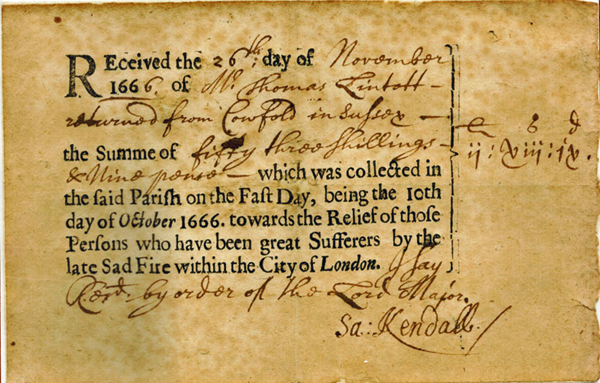
Receipt for the donation made by the village of Cowfold towards the relief of Londoners who had suffered as a result of the Great Fire in 1666.
This receipt acknowledges the donation made by the village of Cowfold and the surrounding parish of 53 shillings and 9 pence (around £400 today), on 26th November 1666 towards the relief of Londoners who had suffered as a result of the Great Fire.
The Great Fire devastated London. There were few recorded deaths, but estimates put the destroyed property value at £10,000,000 (£1.5 billion in today’s money). After the fire much of London needed to be rebuilt. King Charles II ordered collections at churches across the country for the Lord Mayor of London to distribute amongst homeless and destitute Londoners. The total raised throughout the country was over £16,400 – covering 0.13% of the cost of repairing damage.
This is one of a very few remaining examples of such a receipt and is on display at the Museum of London
2 Village Hall
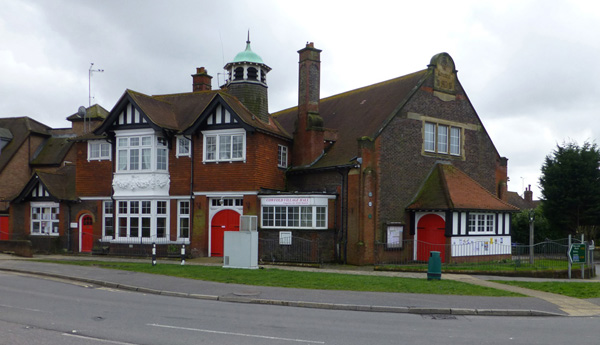
Cowfold Village Hall
The Hall was built in 1896 at a cost of £3,000 paid for by Frederick DuCane Godman who lived at South Lodge, Lower Beeding and was a member of the family that contributed substantially to the village community.
The hall was officially opened on 17 December 1896 but before that had been used for Queen Victoria’s Jubilee Tea. It very quickly became a focal part of the social life of the village, being used for a range of purposes including: an Annual Ball in aid of the poor until 1913, concerts and lectures, the Boys’ Brigade, dances during WW2, the Home Guard, a temporary schoolhouse for a school evacuated from Croydon in 1939, and a library and reading room.
3 Church Marks (also known as Church Pannells)

Church Marks (Pannells) in St Peter’s Churchyard
A wooden fence surrounds St Peter’s Churchyard and each post is engraved with the name of a farm or house belonging to the owner at the time the fence was erected, as they paid a tithe to support the upkeep of the church. It has been renewed two or three times, so the names have varied over the centuries. The first pannells we have a record of were erected in 1632.
4 Brass of Prior Thomas Nelond in St Peter’s Church
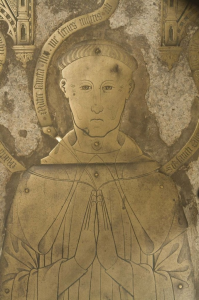
Brass of Prior Thomas Nelond in St Peter’s Church
This 10ft 2in long brass is the most elaborate example of its kind in Sussex and was found on the tomb slab of Thomas Nelond, 26th Prior of St Pancras at Southover, Lewes who died on the 6th April 1439. It is believed that, in 1537, at the Dissolution of the Priory ordered by Henry VIII under the supervision of Thomas Cromwell, the brass was removed to Cowfold Church in an attempt to keep it safe and it has remained there ever since. It is a mystery who may have moved such a heavy slab over 21 miles in the depths of winter.
More details can be found on the Lewes Priory Trust website here.
5 Godman Book
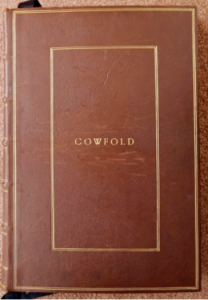
The Godman Book
This illustrated book belongs to St Peter’s Church and was compiled by Colonel Charles Bulkeley Godman and presented to the vicar and churchwardens in 1930. It is a fascinating insight into Cowfold’s past having been written in the early part of the 20th century with references back for 100’s of years.
6 War Memorials in the Churchyard and inside St Peter’s Church
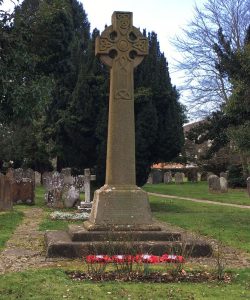
War Memorial in St Peters Churchyard
The memorials include the names of service men from around the area. Some are buried in the churchyard and some elsewhere. On every Remembrance Sunday, closest to 11 November, the names are read aloud, as people pay their respects to those who fought and died for their country.
7 St Peter’s Church medieval stained glass windows
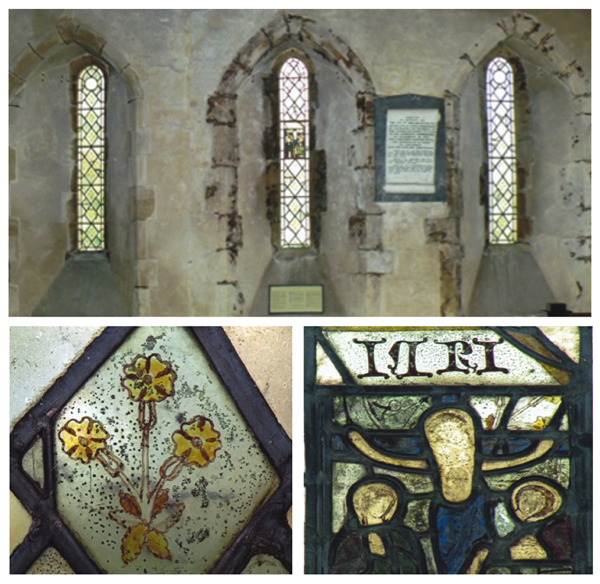
Three medieval lancet windows in St Peter’s Church
Three medieval lancet windows in St Peter’s Church contain glass that is an example of some of the oldest stained glass in the country and are therefore of great historical interest. They are also valuable as evidence of the style of glazing adopted by the medieval builders of the church, the first mention of which is in 1232.
Some of the valuable stained glass can be dated to around the middle of the 13th century, others to around the beginning of the 14th century. The windows themselves are characteristic of the simple Early English architecture of the period.
The middle window contains a rare and beautiful example of a crucifixion set under an inscription and in a background of fragments of grisaille glass which are likely to date from the middle of the 13th century. ‘Grisaille’ is a term used for panels of clear glass with simple, often monochrome only, decoration.
The flowers depicted are primroses and they were always known as the “Primrose Windows”; at Easter, they were decorated with bunches of primroses, which grew in profusion in Baker’s Shaw and all round the village.
8 Margaret Cottages
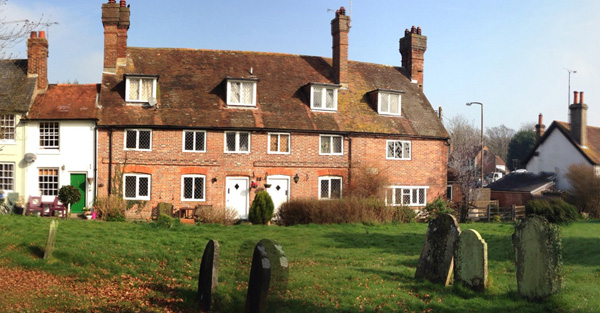
Margaret Cottages
Four houses stood on the northern boundary of Cowfold churchyard in 1635 one of which was “the parish house wherein Thomas Ellis now dwelleth”. The ‘parish house’ was the ‘poor house’ or ‘work house’. The house called Margaret Cottages, named after Margaret Norris who bought the house in 1926, converted it into six private alms houses and then rented them to the elderly of the parish, was originally the ‘Old Workhouse’ but is probably a successor to the building which stood there in 1635; it dates from around 1753.
The old Poor Law system provided relief on the premises of the workhouse or ‘poorhouse’ for those parishioners who were unable to maintain themselves. Under the Act of Settlement of 1662 this relief was confined to people who could show an established settlement in the parish. An early reference to Margaret Cottages is in the parish registers in 1773. In that year eight of its inmates died mainly from an epidemic of putrid fever. Poor Law expenditure was found from a parish rate levied on the rental values of properties and the fund was administered by two Overseers of the Poor appointed annually.
9 Capons
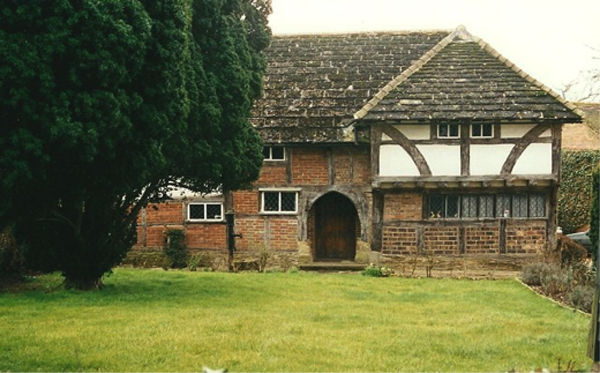
Capons Farmhouse
Capons Farm (formerly known as Arnolds) is a medieval house and is the oldest in the Cowfold area. It is a good example of a Sussex Wealden yeoman’s house which has been subsequently extended and enlarged.
In medieval times the farm, one of nine around Cowfold, belonged to the manor of Ewhurst in Shermanbury. The house is likely to have been first built as a yeoman’s house in the 13th century and the name Arnolds could have been derived from a Philip Arnald recorded as a taxpayer in the Subsidy Rolls record in 1296.
10. Monastery Bell at St Hugh’s Charterhouse, Parkminster
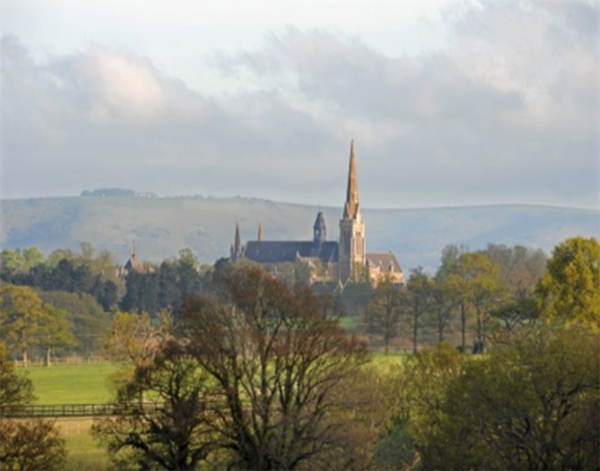
St Hugh’s Charterhouse, Parkminster
The ‘Sancta Maria’ bell is rung several times each day and night to call the monks to prayer. It is heard in the village and gives great comfort, especially to those awake at night. The Monastery is not just a building but a community of men belonging to the’ silent’ Carthusian order, whose mother house is in Chartreuse in France. The monks, dressed in their cream habits, can sometimes be seen walking in the village.
